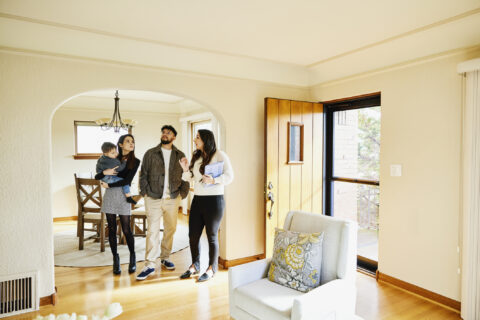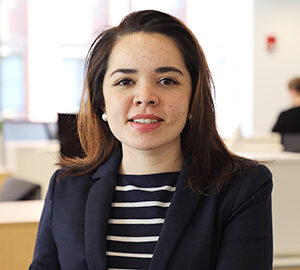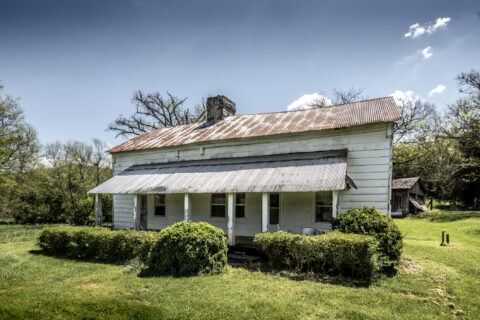Note: The terms LGBT, LGBTQ, LGBTQ+, LGBTQIA+, and QT2BIPOC are used in this blog. While not interchangeable, these terms are all used in this blog and derived from their respective original sources to uphold the accuracy of the data and programs being presented.
Nationally, lesbian, gay, bisexual, transgender, and queer (LGBTQ) Americans experience housing instability and inequitable housing access at higher rates than their non-LGBTQ counterparts.
Especially salient is the unstable housing conditions that LGBTQ youth face, often resulting in homelessness. LGBTQ youth (age 18-25) face 2.2 times greater risk of homelessness than non-LGBT youth, with 28 percent of LGBTQ youth reporting they have experienced homelessness or housing instability at some point in life. Youth who are in search of emergency housing options face many barriers to accessing safe and stable housing, such as lack of financial stability, lack of rental history, or the ability to sign a lease without parental consent. Nearly 40 percent of all homeless youth identify as LGBTQ+, and family rejection was a major factor of homelessness for 68 percent of those cases.
Though LGBTQ youth homelessness is a crisis at the forefront of housing challenges facing the country, it is important to recognize that LGBTQ people of all ages face disparities in accessing stable housing and through the housing application process. While LGBTQ discrimination is especially conspicuous in the rental market, discriminatory practices can still exist for LGBT homeowners and prospective homebuyers. Homeownership rates of single LGBT adults are significantly lower than their non-LGBT counterparts. Similarly, same-sex couples are significantly less likely to own their homes than different-sex couples (63.8 percent and 75.1 percent respectively). Same-sex couples also face discrimination by mortgage lenders; same-sex couples experience a 3 to 8 percent lower approval rate and higher interest rates and fees. LGBT youth and adults alike also face difficulty accessing homeless intervention services (such as shelter services) due to harassment, violence, sex-segregated facilities, and inadequately trained staff.
LGBTQIA+ people of color face housing discrimination and youth homelessness at higher rates compared to white LGBTQIA+ counterparts. Nearly half (44 percent) of Indigenous LGBTQ youth reported experiencing homelessness or housing instability at some point in life. Additionally, 44 percent of LGBTQ people of color report that discrimination has affected their ability to rent or purchase a home to some degree, compared to 32 percent of white LGBTQ respondents reporting the same.
What Are Cities Doing to Address the Issue?
Portland, Oregon
The City of Portland operates two Alternative Shelters to alleviate homelessness, one of which is the Queer Affinity Village. The Queer Affinity Village contains 35 sleeping units and mainly serves the LGBTQIA+ community. The installation and maintenance of the shelter was possible in part by a federal grant from the American Rescue Plan (ARPA) and the City’s Safe Rest Village team. On site, there is also access to on-site case management and mental and behavioral health services. The main goal of the Queer Affinity Village is to provide safe temporary housing to LGBTQ individuals experiencing homelessness as they work to transition into more permanent housing.
Detroit, Michigan
The Ruth Ellis Clairmount Center for LGBTQ+ Youth opened in 2022 in Detroit’s Piety Hill neighborhood. The center contains 43 units of permanent supportive housing, a community health and wellness center, and community spaces to deliver other vital supportive services to LGBTQ+ youth (age 13-30). The on-site health and wellness center provides comprehensive sexual health services, HIV treatment, gender-affirming care, and other critical health services. The center’s development and construction were funded by Low-Income Housing Tax Credits (LIHTC) through the Michigan State Housing Development Authority, in addition to the use of Community Development Block Grants (CDBG) and Payment In Lieu of Taxes (PILOT) program.
Seattle, Washington
The Queer the Land collective received a $75,000 grant from the City of Seattle through the city’s Equitable Development Initiative. The collective provides a variety of services to the community, but one project in particular includes a 12-bedroom house on Beacon Hill to provide housing for queer trans and 2spirit Black Indigenous people of color (QT2BIPOC). The main goal of this housing initiative is to provide a safe space for QT2BIPOC people, specifically those at high risk for displacement from their neighborhoods and homes.
What’s Next for Cities?
As cities across the country continue to address local homelessness concerns, there are important considerations that can be made to better support LGBTQIA+ communities.
- Collaborate with nonprofit organizations or private providers, especially small and mid-size cities who may be resource-constraint, to provide LGBTQIA+ housing and supportive services
- Provide training for staff at agencies and partner organizations providing housing, child welfare, homelessness services, etc. to the LGBTQIA+ population
- Enhance data collection at a city and neighborhood level on housing issues faced by and initiatives supportive of the LGBTQIA+ community to better craft evidence-based, targeted policy solutions and programming
- Expand local Fair Housing and anti-discrimination laws to cover more protected classes and provide legal protections on the basis of sexual orientation and gender-identity
- Further develop LGBTQIA+-specific housing programs and services to offer targeted supports, especially for LGBTQIA+ youth experiencing homelessness
HUD LGBTQI+ Youth Homelessness Initiative
ABOUT THE AUTHOR
Mia Chapman is a Housing and Community Development intern at National League of Cities.











